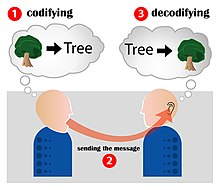Informatics Educational Institutions & Programs
Communication physics is one of the applied branches of physics. It deals with various kinds of communication systems.[1] These can range from basic ideas such as mobile phone communication to quantum communication via quantum entanglement.[2] Communication physics is also a journal edition created in 2018 published by Nature Research that aims to publish research that involves a different way of thinking in the research field.[3]

Applications
Communication physics aims to study and explain how a communication system works. This can be applied in a hard science way via Computer Communication or in the way of how people communicate.[1]
An example of communication physics is how computers can transmit and receive data through networks. This would also deal with explaining how these devices encode and decode messages.
See also
References
- ^ a b Sostrin, Jesse (2013), Sostrin, Jesse (ed.), "Communication Physics: What Holds Patterns Together", Re-Making Communication at Work, New York: Palgrave Macmillan US, pp. 81–87, doi:10.1057/9781137332769_8, ISBN 978-1-137-33276-9, retrieved 2023-03-26
- ^ Smart, Scott E.; Hu, Zixuan; Kais, Sabre; Mazziotti, David A. (2022-01-25). "Relaxation of stationary states on a quantum computer yields a unique spectroscopic fingerprint of the computer's noise". Communications Physics. 5 (1): 1–7. arXiv:2104.14552. doi:10.1038/s42005-022-00803-8. ISSN 2399-3650.
- ^ "Introducing Communications Physics". Communications Physics. 1 (1): 1–2. 2018-02-22. doi:10.1038/s42005-018-0008-5. ISSN 2399-3650.
















